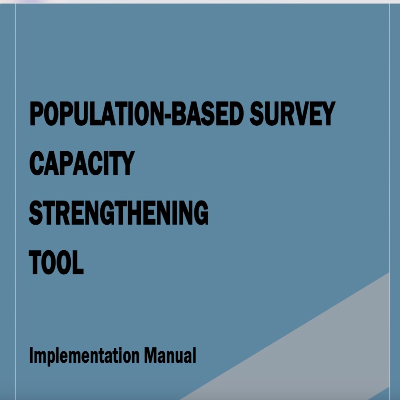Population-based Surveys
Since 2018, the Center for International Health, Education, and Biosecurity has been funded by PEPFAR through the CDC to implement Population-based HIV Impact Assessment Surveys (PHIAs), beginning with the Country Operational Plan funded Nigeria HIV/AIDs Indicator and Impact Survey (NAIIS). PHIAs objectively measure the progress and impact of HIV prevention, care, and treatment programs at a national and subnational level enabling countries to focus efforts where needed to reach the last mile of HIV epidemic control.
Population-based Survey Capacity Strengthening Tool

NAIIS was the largest PHIA survey ever conducted, with over 170,000 participants. Despite the majority of the countries in sub-Saharan Africa supported by PEPFAR with a high HIV prevalence having a previous PHIA survey conducted and many having had two rounds of surveys, there was no existing tool to objectively measure the local capacity to implement their next survey.
In collaboration with CDC, we are developing a Population-based Survey Capacity Strengthening Tool (CST) to systematically support the transition of population-based household survey implementation, analysis, and dissemination from international partners to local implementing partners (IP). The design of the tool enables the local IP, survey funder, and government institutions to objectively identify areas in need of strengthening to ensure a methodologically and ethically sound locally implemented survey is conducted with efficiency and quality. The tool is designed to be administered, and a capacity strengthening plan developed in collaboration with the Ministry of Health, National Public Health Institute, and National Statistics Agency alongside PEPFAR and CDC within a partnership framework.
The goal is to give country leadership, national institutions, the funding agency, and local partners a useful tool to assess the overall capacity to deliver a quality survey from planning through dissemination. The information from the tool would then be used to prioritize activities to strengthen capacity when a need is identified and/or identify areas of strong capacity that could be used to exemplify a best practice. The information from the tool may also be used to identify portions of the survey that may require technical assistance for survey implementation while capacity strengthening is ongoing.
The CST is organized by eight capacity objective areas grouped into three sections:
1) Country survey environment
2) IP business capacity, and
3) Survey management and implementation technical capacity

Each objective includes a set of indicators under thematic areas that are representative of the systems and activities that are critical to planning and implementing a population-based household survey. Each indicator has a set of observable statements that are scored on a scale of 0-3. A rating of 0 represents no capacity or system and a 3 represents highly developed capacity. The use of observable statements enables stakeholders to see what is needed to move to a higher level with respect to each indicator and serves as the basis for the development of specific and measurable capacity-strengthening plans.



